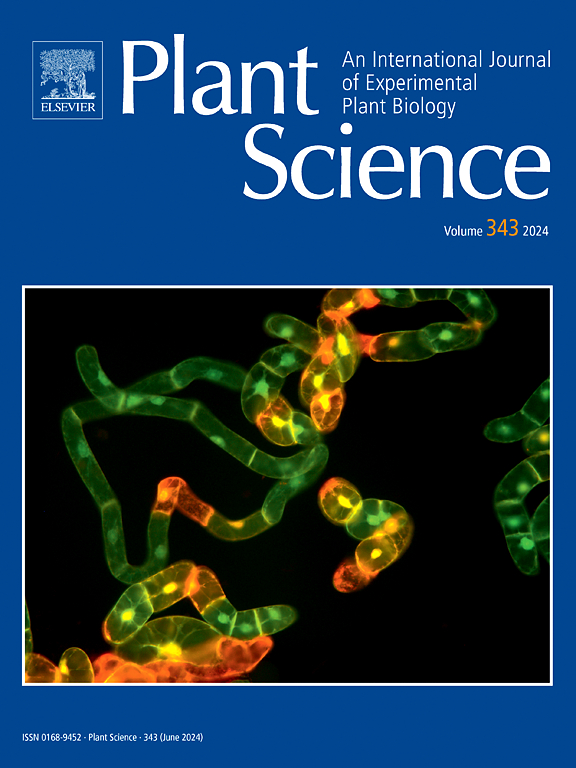Bcwf调控白菜白色花瓣的颜色
IF 4.1
2区 生物学
Q2 BIOCHEMISTRY & MOLECULAR BIOLOGY
引用次数: 0
摘要
花色对决定芸苔属植物的观赏价值非常重要。然而,我们对白菜[Brassica campestris (syn. Brassica rapa) ssp. chinensis]花色调控的了解还很有限。在本研究中,我们通过分析白花和黄花的遗传群体,研究了白花性状的分子机制。遗传分析表明,白花性状由一个名为 Bcwf 的单隐性基因控制。通过BSA-Seq和精细图谱分析,我们发现了一个候选基因BraC02g039450.1,它与拟南芥中参与类胡萝卜素酯合成的AtPES2相似。序列分析表明,白花中 Bcwf 的启动子区域存在一些突变。烟草瞬时试验证实,这些突变降低了启动子的活性,导致白花中 Bcwf 的表达下调。此外,白花中 Bcwf 的沉默导致花瓣颜色变浅,类胡萝卜素含量降低。这些发现为研究白花菜性状的分子调控提供了新的视角,并突出了Bcwf在花瓣着色和类胡萝卜素积累中的重要性。本文章由计算机程序翻译,如有差异,请以英文原文为准。
Bcwf regulates the white petal color in pak choi [Brassica campestris (syn. Brassica rapa) ssp. chinensis]
Flower color is important in determining the ornamental value of Brassica species. However, our knowledge about the regulation of flower color in pak choi [Brassica campestris (syn. Brassica rapa) ssp. chinensis] is limited. In this study, we investigated the molecular mechanism underlying white flower traits in pak choi by analyzing a genetic population with white and yellow flowers. Our genetic analysis revealed that the white trait is controlled by a single recessive gene called Bcwf. Through BSA-Seq and fine mapping, we identified a candidate gene, BraC02g039450.1, which is similar to Arabidopsis AtPES2 involved in carotenoid ester synthesis. Sequence analysis showed some mutations in the promoter region of Bcwf in white flowers. Tobacco transient assay confirmed that these mutations reduce the promoter's activity, leading to downregulation of Bcwf expression in white flowers. Furthermore, the silencing of Bcwf in pak choi resulted in lighter petal color and reduced carotenoid content. These findings provide new insights into the molecular regulation of white flower traits in pak choi and highlight the importance of Bcwf in petal coloring and carotenoid accumulation.
求助全文
通过发布文献求助,成功后即可免费获取论文全文。
去求助
来源期刊

Plant Science
生物-生化与分子生物学
CiteScore
9.10
自引率
1.90%
发文量
322
审稿时长
33 days
期刊介绍:
Plant Science will publish in the minimum of time, research manuscripts as well as commissioned reviews and commentaries recommended by its referees in all areas of experimental plant biology with emphasis in the broad areas of genomics, proteomics, biochemistry (including enzymology), physiology, cell biology, development, genetics, functional plant breeding, systems biology and the interaction of plants with the environment.
Manuscripts for full consideration should be written concisely and essentially as a final report. The main criterion for publication is that the manuscript must contain original and significant insights that lead to a better understanding of fundamental plant biology. Papers centering on plant cell culture should be of interest to a wide audience and methods employed result in a substantial improvement over existing established techniques and approaches. Methods papers are welcome only when the technique(s) described is novel or provides a major advancement of established protocols.
 求助内容:
求助内容: 应助结果提醒方式:
应助结果提醒方式:


